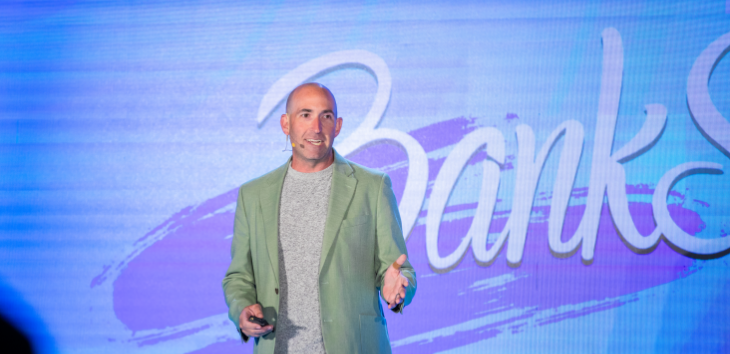5 min read
5 Failed Companies and What Financial Institutions Can Learn From Them
 Jared Jones
:
Mar 3, 2016
Jared Jones
:
Mar 3, 2016

You’ve heard the saying you have to fail to succeed, right? With personal goals and business ambitions sure, that phrase applies. But would you consider Polaroid on the verge of success? We didn’t think so.
When it comes to financial institutions and any big company facing changing consumer preferences, this saying needs to become: you have to innovate to succeed. Choosing not to adapt, to transform, to push towards the future is choosing to fail.
Don’t choose failure—too many consumers are counting on you.
Here's a look at 5 formerly huge companies that failed due to lack of innovation and what financial institutions can learn from each of them.
1. Blackberry

Remember in early 2007 when you had to have a “Crackberry” in order to keep up? How important it was to text, search the internet, and check email? Remember how painful it was to operate but so cool that you could do those things on a phone in the first place?
Do you remember what happened less than seven months later? The iPhone.
According to a book chronicling the rise and fall of Blackberry, founder and vice-chairman of Blackberry Mike Lazaridis’s response to the iPhone launch was, “how did they do that?”
Blackberry’s lack of awareness and blindness by past success is why they didn’t see the smartphone coming and why they only share 0.3% of the current smartphone market according to IDC.
The big takeaway for FIs:
Never find yourself saying “how did they do that?” Be the first to have branches designed to move consumers into loyal fans. Be the first to have interactive digital signage. Be first.
Stay current on banking technology and design trends. Envision your branches of the future and allocate funds from your budget to make them a reality.
2. MySpace

Show of hands, who’s currently logged into their Facebook account? Most of you? Show of hands, who’s currently logged into their MySpace account? None of you.
How could one of the first social networks fail? People were able to customize their entire page, add music that they liked, post things no one cared about—so how did something so plain-looking like Facebook win?
Facebook offered a social network that genuinely linked people through common interests and backgrounds with “likes” and “groups.” It was about connecting people. MySpace lacked a vision for what consumers wanted so consumers left.
It seems like a joke that MySpace (blue) ever existed when you see their highest peak period in comparison to Facebook (red) according to Google Trends:
What FIs can learn from the decline of MySpace:
Know that your financial institution exists to serve consumers and always ask yourself two questions:
- What does today’s consumer want in a branch?
- What does tomorrow’s consumer want in a branch?
Then implement them. Implement mobile technology, assisted self-service, and open-plan branches.
3. Yahoo!

When writing this blog to help FIs stay ahead of the curve (because your service is too important to fail) I knew I’d have to talk about Yahoo! and where they went wrong… so what’s the first thing I did?
I Googled it.
Here’s what I found:
- In 2002, Yahoo! CEO Terry Semel had zero desire to spend $5 billion dollars on an up-and-coming search engine competitor. He saw the dollar figure over the potential success. That search engine competitor was Google.
- After failing to acquire Google, Google’s display ads were starting to catch up to Yahoo! in revenue. Faced with another potential acquisition to boost display ad success, Yahoo! refused to merge with DoubleClick… guess who did? Google it ;)
- You’ve heard the phrase history repeats itself? Just four years later in 2006, Yahoo! had another opportunity to strike a deal that would put them back on top. This deal however would cost them $1 billion. So, in true Yahoo! fashion, they lowered their offer last second and the seller pulled out of the deal. That seller was Mark Zuckerberg, that company was Facebook, and that deal is worth 150-times more than the original asking price of $1 billion.
How the downfall of Yahoo! applies to FIs:
Of course successful branches are more than just money, but don’t let money prevent you from making more money. Investments that Yahoo! could have easily afforded cost them everything. They’re barely clinging to 4th place right now behind Google, Facebook, and Microsoft—but the gap is enormous.
Embrace investing in success, innovation, and ROI.
4. Blockbuster

Remember piling your family into a minivan and driving to Blockbuster (or worse, Hollywood Video) to rent a movie only to find out the movie’s been completely checked out? Remember thinking to yourself, if only we could just stay home and rent this movie? That disappointment in service plus that kind of thinking is how the future was created.
People thought it, Blockbuster ignored it. But, Netflix didn’t. Which one is not only still in business but incredibly profitable? Exactly.
Blockbuster, like Yahoo!, was another company stuck in its ways and refused to adapt. In 2000, they had an opportunity to purchase Netflix for $50 million. They passed.
How FIs can avoid Blockbuster’s fate:
Adapt to people. You bank at your financial institution. So, what would make your experience better? Better connecting your products and services to consumer needs? Better online service? Self-service kiosks at branches? Not having to wait in line for teller services? Touch screens to learn about products that could improve your life financially? These are things people are looking for. This is your opportunity to be Netflix.
Transaction-focused tellers, limited ATM services, brochure tables no one bothers to look at anymore, and static banners are examples of Blockbuster-style branches. Not only do consumers not want these things anymore, but they’re costing you more money than the alternative. Do the opposite.
5. Borders Books

Last, least, or maybe just tied for worst, is Borders Books. When Amazon, Apple, and even Barnes & Noble offered digital versions of books for people to not only read but have easier and faster access to, Borders did the unthinkable: they focused on music sales. As in, physical CDs.
Are you shaking your head right now? That’s exactly the correct response. The worst part, as a TIME Magazine article highlighted, they did this while the iPod was already on the market!
Yes, while other companies, and more importantly CONSUMERS, moved towards digital books AND music, Borders went the way of failed entertainment retailer The Warehouse. Remember them? It’s ok if you don’t.
A lesson learned from Borders Books for FIs:
Don’t expect to succeed by going backwards. This entire blog is about moving forward, adapting, innovating, and growing alongside today’s and tomorrow’s banking consumer. Borders not only lost touch with the market, but they lost touch with their consumers too.
Bottom line, if it’s new and it benefits your consumers, invest in it.
Recapping How Financial Institutions Can Avoid Failure:
- Never ask, “How did they do that?” Instead, be first.
- Focus on service by asking two questions, “What does today’s consumer want?” and “What does tomorrow’s consumer want?”
- Don’t let money prevent you from making more money. Invest in success, innovation, and ROI.
- Adapt to people. You’re a consumer too, what would make your experience better? Implement it. If it’s outdated, do the opposite.
- Don’t go backwards. If it’s new and benefits your consumers, invest in it.
If you don’t print this blog out and post these 5 takeaways up where you can see them every day, if you don’t remember anything else from this blog, remember this:
You have to innovate to succeed.
DBSI is leading the way in successful banking innovation and branch transformation. No branch left behind! Like I said, your service is far too important to fail. People need you!
But realize this, they will leave you for branches and financial institutions that have adapted to their lifestyle, their technological and service expectations, and their desire for convenience. We’ll help you avoid this fate and build lasting brand loyalty.


































-1.png)
-4.png)
